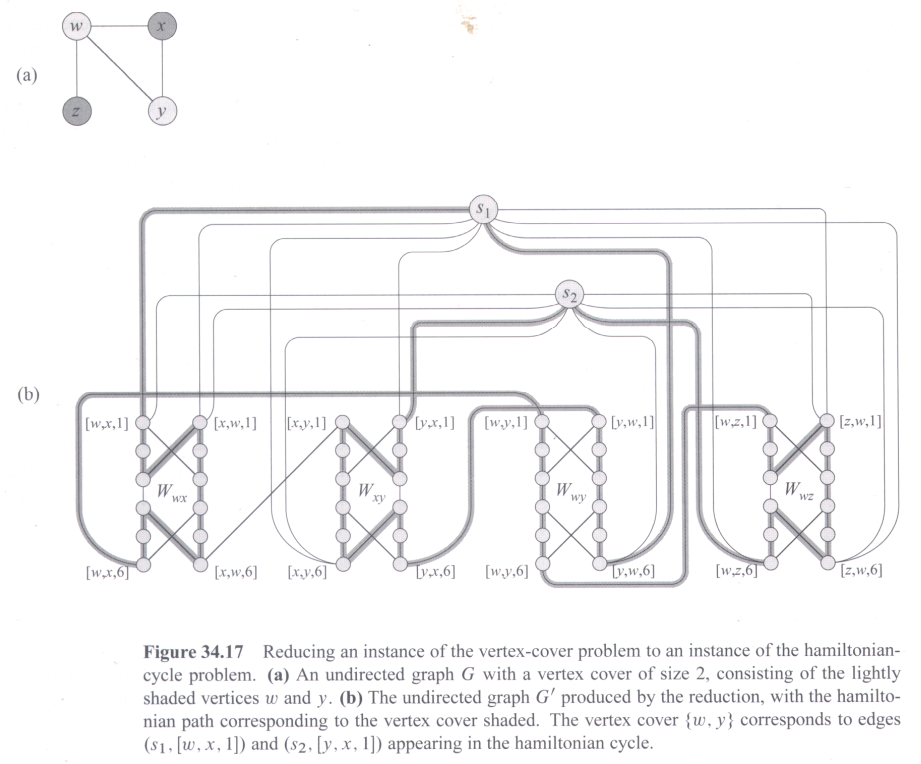
CS 3343 Analysis of Algorithms |
Hamiltonian-Circuit
reduces to Traveling-Salesman HC ≤p TS |
| Traveling-Salesman Problem (TS): Start a complete undirected graph G=(V,E), and for each pair of vertices i and j a cost function c(i,j)>=0. A TS-tour is a circuit that visits each vertex exactly once. The total cost of the TS-tour is the sum of c(i,j) for each individual step from vertex i to vertex j. The decision question is: Given an integer k, is there a TS-tour with total cost less than k? |
| Vertex-Cover Problem (VC): Start with an undirected graph G=(V,E), and a positive integer k. A vertex cover is a subset V' of V such that if (u,v) is an edge, then either u is in V' or v is in V' (or both). (Thus the vertices in V' "cover" at least one end of each edge.) The size of a vertex cover is the number of vertices in V', that is |V'|. The decision question is: Given the integer k, is there a vertex cover of size equal to k? |
